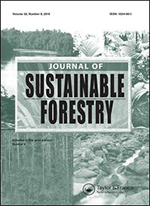
Culm Allometry and Carbon Storage Capacity of Bambusa vulgaris Schrad. ex J.C.WendL. in the Tropical Evergreen Rain Forest of Cameroon
Year of publication: 2020
Author: B. Neba, R. Kaam, M.Tchamba, L. Zapfack, C. Chimi, F. Gadinga, A. Tanougong, R. Tsewoue, J. Atchombou, L. Tientcheu, H. Zanguim, Y. Kede, S. Djeukam
ABSTRACT
The carbon storage capacity and allometry for bamboo in forest ecosystems has been neglected in the Congo Basin. This study evaluated the above ground carbon stocks and develop allometry for Bambusa vulgaris Schrad. ex J.C.Wendl. in the tropical evergreen forest of Cameroon. Data was collected destructively. Culm density and aboveground carbon were extrapolated; and log transformed models were regressed for best fit allometries. Age of bamboo appeared to be the best predictor of biomass, followed by height and diameter respectively. Height of culm was the best predictor of leaf biomass. The best fit allometric model was obtained when all three predictive variables (diameter, height and age) were inputted in the model. The culm density was 2296 bamboo per hectare (ha); the average aboveground biomass of bamboo was 29 kg; the total aboveground carbon of bamboo per hectare (AGCbamboo per ha) was 29.70 t C per ha and the total aboveground carbon dioxide emission of bamboo per hectare (AGCbamboo emissions per ha) was 108.7 t CO2 equivalence. The more predictive variables were added in a model, the more the model’s quality improved and thereby reducing the uncertainty. Thus, the destruction of one ha of bamboo releases enormous CO2 into the atmosphere. These findings are especially timely given the urgent need to quantify carbon stocks in the tropics and formulate good policies to fight against climate change in Cameroon.
